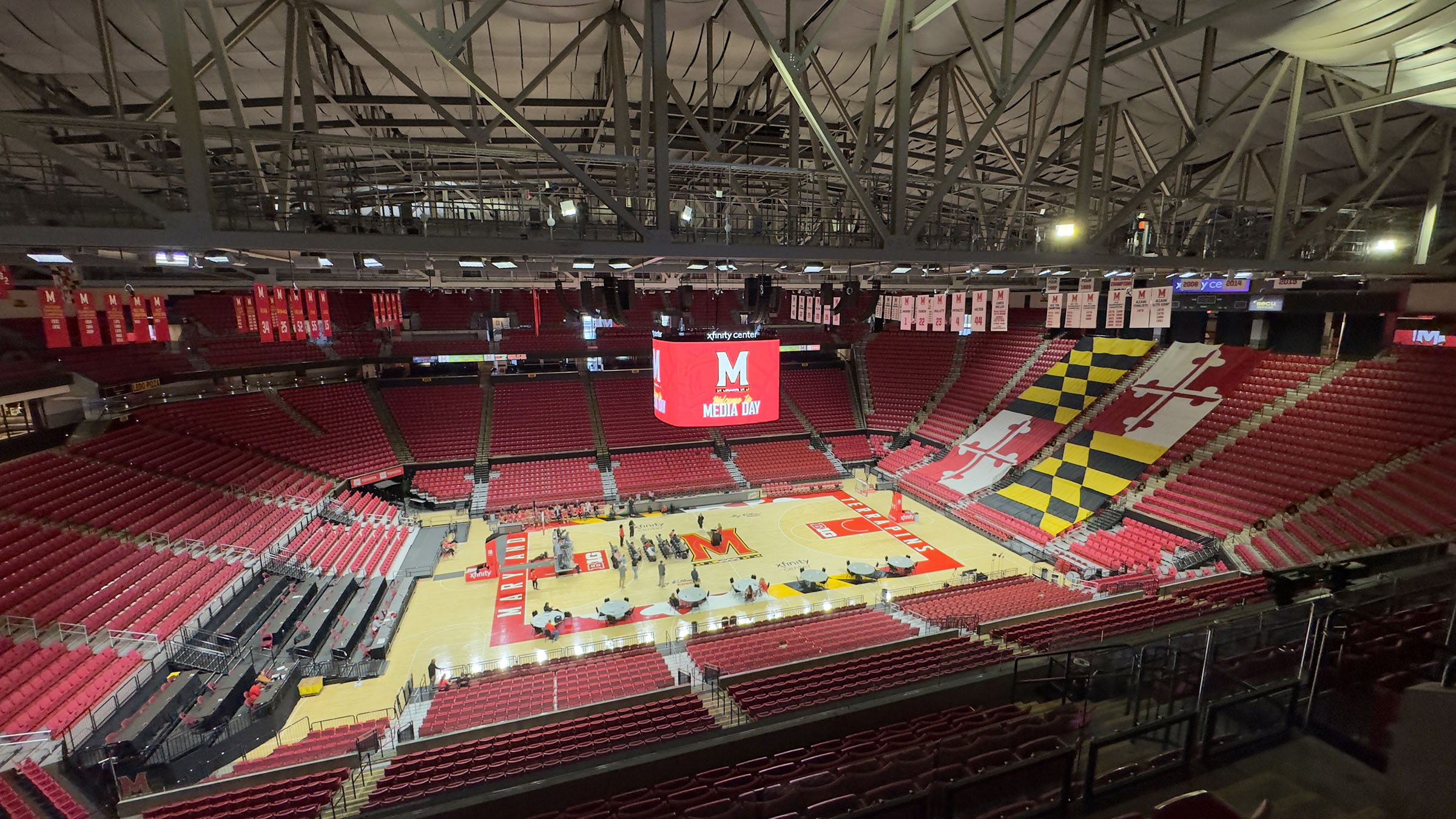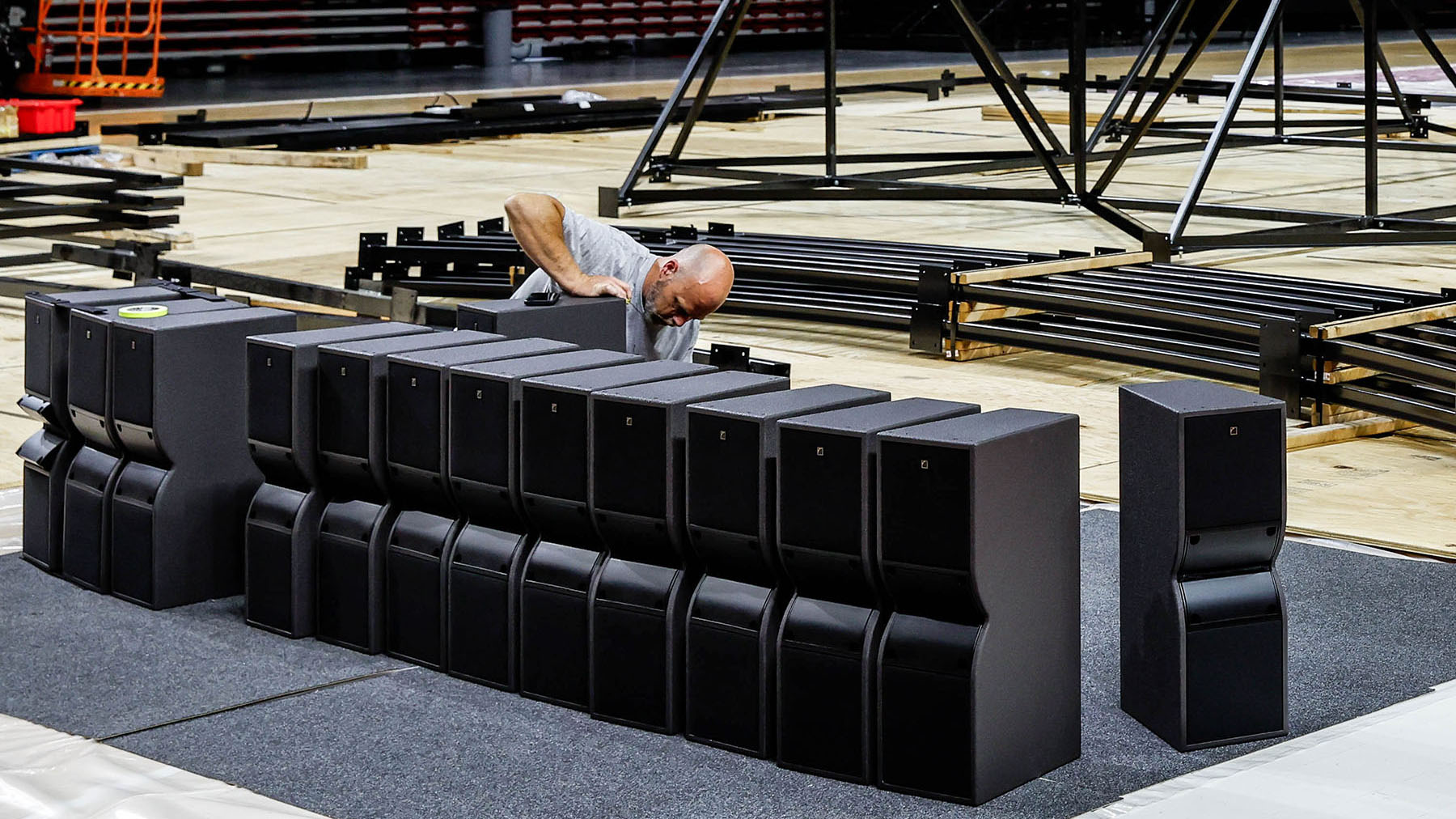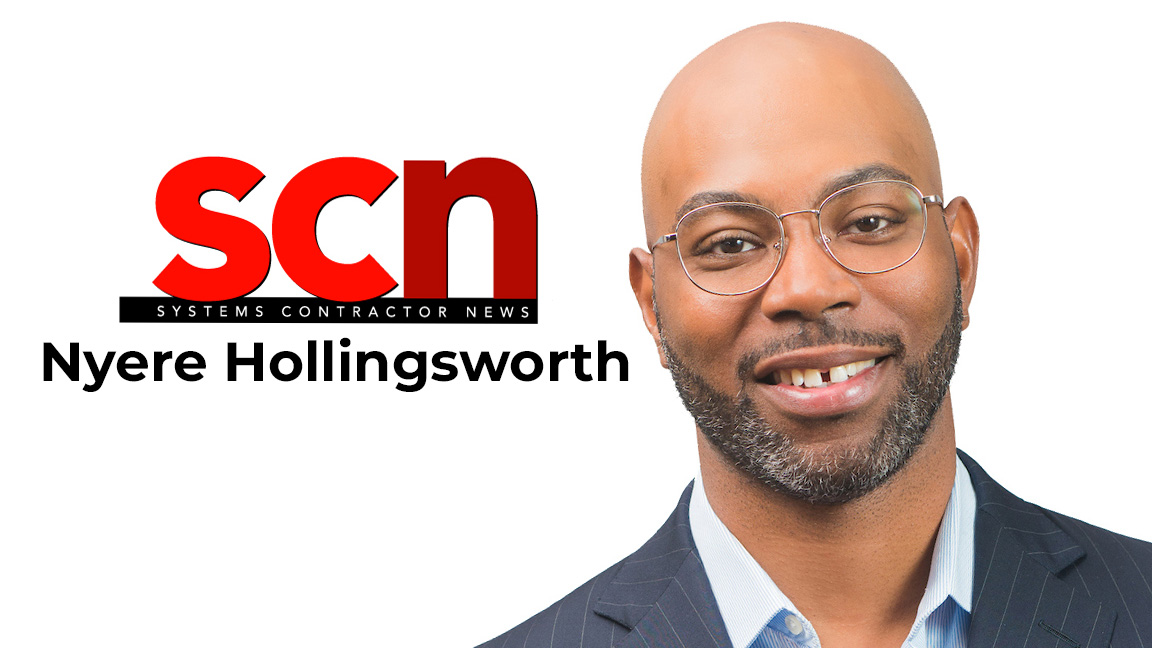How University of Maryland Amped Things Up for College Basketball Season
L-Acoustics Kara IIi loudspeakers are an integral part of a new sound and video installation.

L-Acoustics has teamed up with Daktronics for an audio and video upgrade at the University of Maryland’s XFINITY Center arena. A newly installed L-Acoustics Kara IIi sound system works in concert with a Daktronics 12-display center-hung video system to elevate the fan experience for this year’s college basketball season.
The new sound system at the XFINITY Center, which hosts more than 100 events a year, comprises over 100 Kara IIi loudspeakers. The main system is made up of two arrays of 14 Kara IIi, plus six more arrays of 12 each, as well as four X12 speakers suspended beneath the center display for direct down-firing court coverage. And each of the arrays, which flank the four 18x21-foot main video displays and four 16.5x6-foot underbelly displays angled toward the side and end lines, are backed by a cardioid trio of SB18 IIi subs. A dozen larger KS28 subs are also part of the LFE design, and the entire system is powered by a combination of 16 LA7.16i and three LA12X amplified controllers.
[The Minnesota Vikings Took Over London by Immersing Fans in LED]

Per Daktronics audio applications engineer David Sturzenbecher, the deployment of the LA7.16i amplified controllers makes an important difference in signal management for the venue, with its implementation of the AES67 networking protocol.
Josh Clayton, the University of Maryland’s assistant AD, broadcast and video operations, points out that while the XFINITY Center is home to the University’s Terrapins men’s and women's basketball teams, it’s also competing with Big Ten and other college sports, as well as six professional sports franchises: the NFL's Baltimore Ravens and Washington Commanders, MLB's Baltimore Orioles and Washington Nationals, the NBA's Washington Wizards, and the NHL's Washington Capitals.
[Complete (Midnight) Madness! Kentucky Wildcats to Go LED with ASB GlassFloor]
Several different L-Acoustics models were considered for the line arrays, and Clayton says it quickly became clear that the Kara IIi were more than enough to meet that lofty goal. “We didn’t need to go for a full touring rig to be able to achieve tour-level sound quality using the Kara,” he said. “We knew we needed to make the experience here really impactful, and between the Kara and subs, we nailed it.”
A daily selection of features, industry news, and analysis for AV/IT professionals. Sign up below.
Clayton is also a fan of how the new sound system interfaces with the QSC management system. “For instance, gymnastics is totally different from a basketball game, and they have very different audio needs,” he explained. “We need one set of speakers for the floor routines while the rest of the system has to provide highly intelligible speech to the audience areas of the venue. The way this system is set up, each line array has three individual zones that we can manage separately from each other, and it’s even broken out so that we can separate the main arrays from the subs and the center-hung array. So, for instance, we can turn on the X12 speakers and the subs as a separate system to cover the court for practices while the rest of the system plays other program material. We expected a lot from this sound system, and we got it.”
The AVNetwork staff are storytellers focused on the professional audiovisual and technology industry. Their mission is to keep readers up-to-date on the latest AV/IT industry and product news, emerging trends, and inspiring installations.
